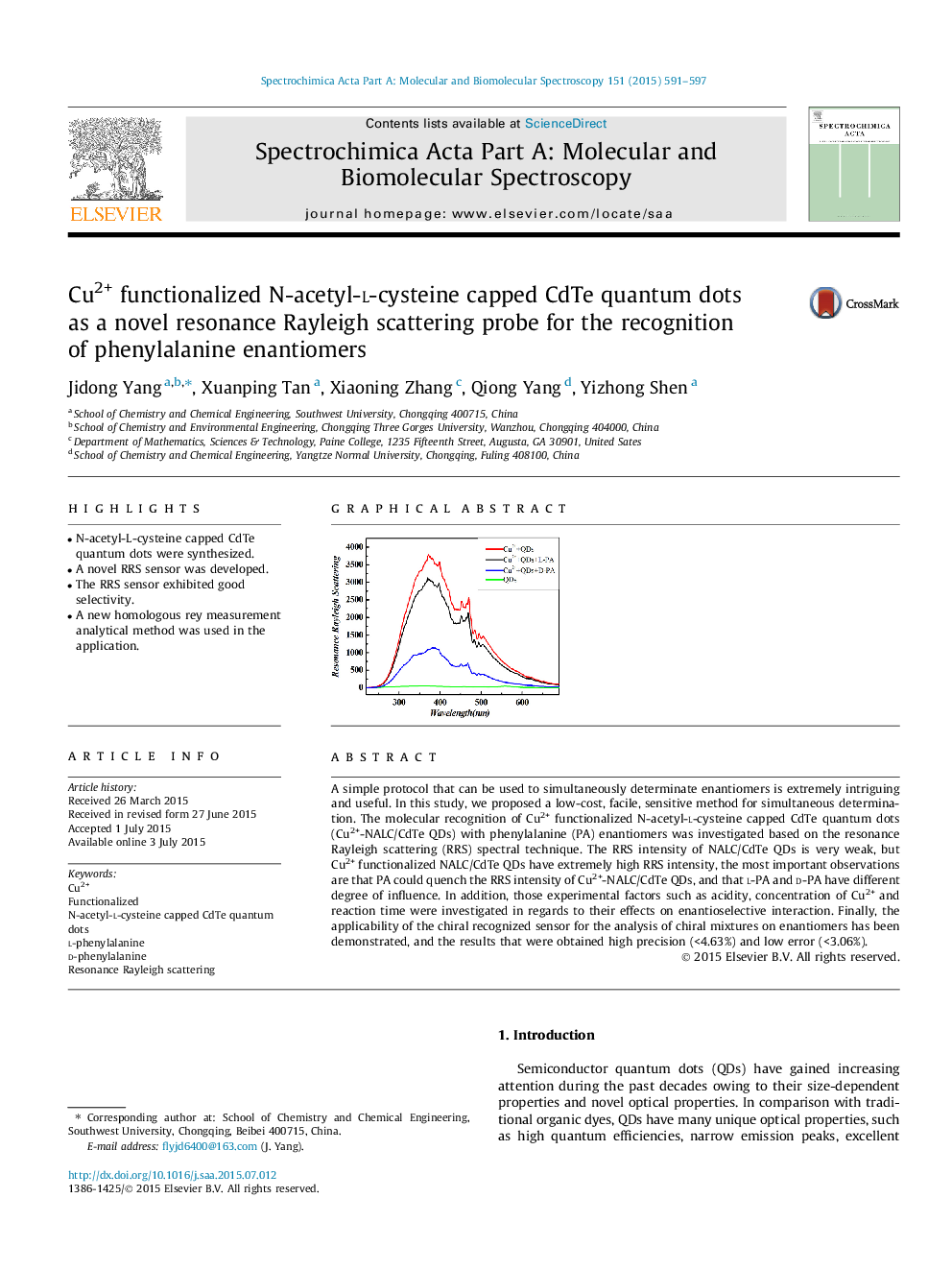| Article ID | Journal | Published Year | Pages | File Type |
|---|---|---|---|---|
| 1230118 | Spectrochimica Acta Part A: Molecular and Biomolecular Spectroscopy | 2015 | 7 Pages |
•N-acetyl-L-cysteine capped CdTe quantum dots were synthesized.•A novel RRS sensor was developed.•The RRS sensor exhibited good selectivity.•A new homologous rey measurement analytical method was used in the application.
A simple protocol that can be used to simultaneously determinate enantiomers is extremely intriguing and useful. In this study, we proposed a low-cost, facile, sensitive method for simultaneous determination. The molecular recognition of Cu2+ functionalized N-acetyl-l-cysteine capped CdTe quantum dots (Cu2+-NALC/CdTe QDs) with phenylalanine (PA) enantiomers was investigated based on the resonance Rayleigh scattering (RRS) spectral technique. The RRS intensity of NALC/CdTe QDs is very weak, but Cu2+ functionalized NALC/CdTe QDs have extremely high RRS intensity, the most important observations are that PA could quench the RRS intensity of Cu2+-NALC/CdTe QDs, and that l-PA and d-PA have different degree of influence. In addition, those experimental factors such as acidity, concentration of Cu2+ and reaction time were investigated in regards to their effects on enantioselective interaction. Finally, the applicability of the chiral recognized sensor for the analysis of chiral mixtures on enantiomers has been demonstrated, and the results that were obtained high precision (<4.63%) and low error (<3.06%).
Graphical abstractFigure optionsDownload full-size imageDownload as PowerPoint slide
